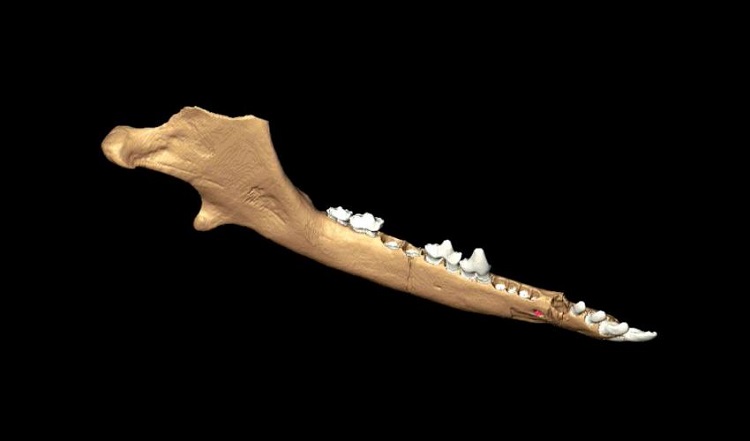Tiny Jurassic Mammals Were Picky Eaters

In the Jurassic Period, when dinosaurs ruled the land, tiny mammals probably had to keep a low profile and survive by gobbling any insects they could find, but new research suggests these early mammals may have been pickier eaters than scientists previously thought.
The Jurassic lasted from about 201 million years ago to 145 million years ago. During this time, dinosaurs were in their heyday, but shrew-size mammals and their immediate ancestors were just starting to emerge.
The Jurassic is also when early mammals began developing better hearing and their teeth began evolving to enable more precise chewing. New techniques of fossil analysis have revealed that some of these mammals were not general insectivores as scientists had believed, but instead probably ate a unique and selective diet of insects. [In Photos: Mammals Through Time]
A team of researchers looked at 200 million-year-old mammal jawbones and teeth discovered in Glamorgan, in South Wales. Based on fossil analysis, the team determined that two of the earliest mammal groups, Morganucodon and Kuehneotherium, likely were discerning about the types of insects they ate.
"None of the fossils of the earliest mammals have the sort of exceptional preservation that includes stomach contents to infer diet, so instead we used a range of new techniques which we applied to our fossil finds of broken jaws and isolated teeth," study lead author Pamela Gill, a research associate in the School of Earth Sciences at the University of Bristol, in the United Kingdom, said in a statement. "Our results confirm that the diversification of mammalian species at the time was linked with differences in diet and ecology."
By examining the microscopic scratches and pits in the fossilized teeth, Gill and her colleagues determined that Morganucodonconsumed mostly harder and crunchier bugs like beetles, while Kuehneotheriumpicked softer insects like scorpion flies. This same technique is used to examine the teeth of present-day bats that feed on insects.
"This is the first time that tooth wear patterns have been used to analyze the diet of mammals this old," Mark Purnell, a professor of palaeobiology at the University of Leicester, in the U.K., said in a statement. "That their tooth wear compares so closely to bats that specialize on different kinds of insects gives us really strong evidence that these early mammals were not generalists when it came to diet, but were quite definite in their food choices."
Sign up for the Live Science daily newsletter now
Get the world’s most fascinating discoveries delivered straight to your inbox.
The jaws of these mammals are only about 0.8 inches (2 centimeters) long, and many of the recovered fossils are broken into fragments. Gill and her colleagues used X-rays and CT scanning to examine the pieces of jawbone and teeth in detail.
The team then digitally reconstructed the jaws by using software to stitch the individual scans together. They also calculated the strength of the jaws using a technique called finite element modeling. This technique is the same one used to design artificial hip joints for humans. The researchers' analysis also showed that Morganucodonand Kuehneotheriumlikely used different methods to catch and chew their prey.
The study was published online today (Aug. 20) in the journal Nature.
Follow Kelly Dickerson on Twitter. Follow us @livescience, Facebook & Google+. Original article on Live Science.











